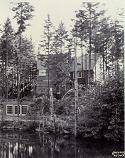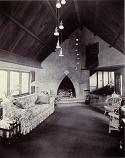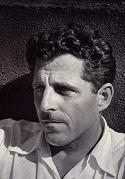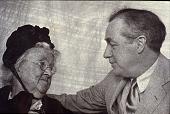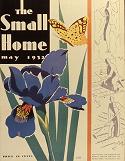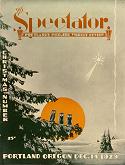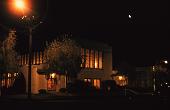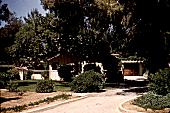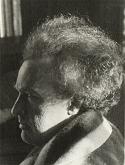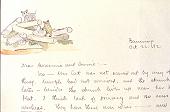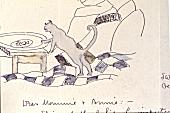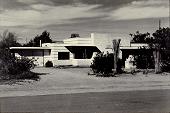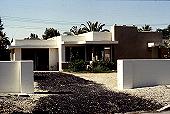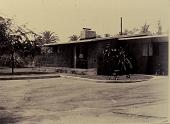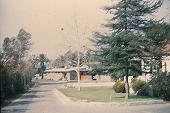|
|
|
Purcell and Elmslie, Architects Firm active :: 1907-1921
Minneapolis, Minnesota :: Chicago,
Illinois |
Ye Older Grindstones
8/1/2004 - 8/17/2004
Bastian Residence
Lake Oswego, Oregon 1925
Bastian living room
James Van Evera Bailey
House by Van Bailey, a la Lake Place
A Scanning We Will Go. While I haven't been able to work on the HTML per se, the site has been in progress nonetheless. I have successfully acquired over 200 new images, many from slides and photographs taken up to 25 years ago. The images represent not only the P&E practice, but wander through the sites most associated with the progress of Purcell's life. Soon to be presented here will be:
- An Island Lake Album, featuring selected Camp Fire Musings by Purcell's grandfather (and determining moral compass), William Cunningham Gray, and images taken from 1880 to 1981 (that last date being my own stay there, in Grandfather Gray's "Library" cabin), covering a century of human experience at Island Lake Camp.
- The Portland [Oregon] Sampler, which shows the progress of Purcell in the same neck of the Northern Pacific woods where in 1905 he had unknowingly contracted tuberculosis and how that disease would abruptly conclude his presence there by the late 1920s.
- A Westwinds Scrapbook, which will wander through the period of writing for Northwest Architect, corresponding with architectural historians, and creating a lush hilltop paradise at his retirement estate in Monrovia, California.
And now that my personal circumstances have been adjusted in a strangely difficult but relieving way (I no longer co-habitate), I am clearing the decks for a long deferred period of writing. Many changes, apparently for the better, still appear to be-coming (a hyphen for WGP, who spend many notes to others in use of hyphens to point out the obvious powers of language to cut to the organic chase). More is coming.
7/31/2004
Catherine Gray and her grandson, ca. late 1920s
The Small Home
The Spectator
Third Church of Christ, Scientist
Portland, Oregon 1925Portland Cement. Another lamentable break in my time here. Life happens. In any event, I continue to add materials related to the decade Purcell spent in Portland. This is more timely because I just saw this week that the East span of the Oakland Bay Bridge is being replaced due to earthquake damage. The Bay Bridge was designed by Purcell's cousin Charles H. Purcell, the same engineer Purcell joined with to form the Pacific States Engineering Corporation (PSEC). The PSEC moniker mostly applies to a series of small houses built on speculation in Portland, Oregon in the early 1920s. Charles H. Purcell bought one of them himself for his own residence. The story goes that Purcell's father had paid for the education of his brother's son, and Charles H. Purcell went into business with WGP as a sort of friendly payback. Obviously he was destined for great things. You can read my earlier assessment of this period in the original biographical narrative written for the Guide to the Purcell Papers, Portland, 1920-1929.
The Portland years are the first true emergence of Purcell as a writer with a "popular" voice with a grassroots-style encouragement, rather than the sometimes too-earnest lectures in his earlier abstract stabs at architectural education. Since architectural work was intermittent at best, he used his connections with The Christian Science Monitor editor Willis J. Abbott to contribute a series of articles to that newspaper. As I described these pieces nearly 20 years ago:
"Beginning in 1923, Purcell wrote thirteen newspaper articles for The Christian Science Monitor. Four of these general interest writings reported advances in bridge design and construction, including a description of the Wolf Creek bridge built by Purcell & Elmslie in Oregon in 1919 .The design problems of auditoriums, particularly for Christian Science assemblies, were discussed in two articles that appeared in 1925. 'A Breakfast Pullman for Small Dwellings' described built in table seating for kitchens, and was reprinted in several other periodicals over following decades."
These articles covered major projects back in Minnesota, including the construction of a new Mississippi River power plant and the first-of-its-kind Cappellen Memorial Bridge (December 27, 1923), which maybe reflects a conversation or two with his bridge-building cousin. Since the surviving files are peppered within the context of his 1920s job accounting system, I'll segregate them here in chronological order:
- "The Romance and Art of Building a Concrete Bridge" (October 1, 1923)
- "Cappellen Memorial Bridge" (December 27, 1923)
- "Good Houses and How They Grow" (January 10, 1924)
- "Concert Stage Settings at the Eastman Theater, Rochester [NY]" (May 14, 1925)
- "Crime and News Advertisements" (June 6, 1925)
- "A Place of Assembly That Can Be Built in Units" (June 25, 1925)
- "A Breakfast Pullman for Small Dwellings" (July 30, 1925)
- "The Island Station of the Saint Paul Gas & Light Company" (August 8, 1925)
- "Silence in City Auditoriums" (August 20, 1925)
- "The Mendota Bridge" (August 27, 1925)
- "Minnesota Sweet Corn" (September 9, 1925)
- "Burnside Bridge, Portland, Oregon" October, 1925
- "A New Graphic Art" January 13, 1927
7/1/2004
Banning Cottage
also known as "731P"
Banning, California 1932
James Van Evera Bailey, associate architect
William Gray Purcell
circa 1930s.
Detail, letter from William Gray Purcell to Catherine Garns Gray and Annie Ziegler
October 22, 1932
Detail, letter from William Gray Purcell to Catherine Garns Gray and Annie ZieglerBetwixt and Between. For a man whose life centered around proactive creative effort, little could have been more devastating to Purcell than the five years he spent in forced bed rest due to tuberculosis. Starting out with a brief stint at a sanatorium in Oregon in late 1929, Purcell had gravitated by 1931 to a facility in the drier climate of Banning, a small town in the southern California desert near Palm Springs, in hopes of "the desert cure." Even though he was at times proscribed from walking even a hundred feet, Purcell managed to keep himself engaged with architecture in a variety of ways. Aside from the small rental property he built in Palm Springs mentioned last time, he also built a small cottage that served as a guest house for the steady stream of people who wanted to come see him. There he would remain until 1936.
The Banning cottage, defined in his records as a "speculative house," is a simple but pleasant small desert dwelling. One nice feature, a small pool that went underneath a wall to link the interior and exterior with a draft of cool breezes, has long since disappeared, but the rest of the structure--at least from the outside--looks remarkably intact and retains the original board-and-batten finish. The house was built with the help of James Van Evera Bailey, whom Purcell sent abroad to travel the South Pacific and otherwise tried to keep employed in the depths of the Depression.
The Banning period was a time of enormous change for Purcell, who could only respond prone on his hospital bed to a daunting array of life altering events that occurred in the distance. The portrait taken of him during this period is poignantly revealing of both his sense of sorrow and his intention to hang in there. The inventory of his losses is appalling for such a short stretch of years, never mind that he was dealing with the nearly complete debilitation of tuberculosis. His adopted son Douglas caught meningitis and died. His beloved grandmother Catherine Garns Gray, who had essentially raised him in childhood, then followed to be near him in Minneapolis and later Portland, died. His father, Charles A. Purcell, died. His wife Edna would and then wouldn't let him have a divorce, off and on, even though their relationship had become exactly as politely acrimonious the one had been between his father and mother, Anna Catherine Purcell.
One way Purcell kept himself sane was by corresponding with his family and friends. Many of these letters survive with small watercolor sketches (1, 2). One favorite subject was the antics of the wildlife around the sanatorium, and especially a family of cats that made their home in the hospital courtyard. This was also the one period in Purcell's life where he regularly kept a daily diary. The five small, leather bound date books are notable records of his journey through this emotional wilderness. The pages accumulated not only information about his current experience, but also served as a repository of small mementoes, like a clipping of blond hair from his childhood. In these pages, too, emerge the saga of his divorce from his first wife and the complex reasons behind the ups and downs of their private life. On the upside, while in the sanatorium Purcell met the woman, Cecily O'Brien, who would become his second wife--but that's a tale of Westwinds yet to come. Of course, I said all this more cogently 20 years ago in my Banning period essay for the Guide to the William Gray Purcell Papers.
6/23-26/2004
Speculative house
Banning, California 1932
James Van Evera Bailey, associate architect
Speculative house
Banning, California
Being remodelled, 1981
Prospect Avenue houses
South Pasadena, California 1946
James Van Evera Bailey, associate architect
Prospect Avenue houses
South Pasadena, California
circa 1950sModern Prospects. Scanning slides must be the most time-consuming form of data acquisition known to humans. Then add in the multi-stage transport from a Mac environment at work to antiquated PC at home, and you can account for the delay since my last presence here despite my intentions. So frustrating, but thanks to TransMac there is at last Qapchu! Some 77 images are freshly making their way into the bowels of the server and from thence into these pages. Among the first of these pictures are a few showing the series of small houses built by Purcell in collaboration with James Van Evera Bailey during the 1930s and 1940s in southern California.
Not all that long ago a friend encouraged me to study the evolution of principals and practices beyond the circa 1920s cutoff that my mind had imposed on interest in architecture. Perhaps the admonitions of Purcell in his many slams of the International Style had turned me off early on, but I had not yet come to appreciate the many tendrils and trellises that constitute the evolution of architectural design post-P&E--and in which Purcell participated. Looking back over the projects Purcell personally funded, with mine eye reconstituted through a perusal of the literature regarding southern California modernism and especially the epicenter that is Palm Springs, I can with some new vigor bring up images of these later Purcellian forays in land development.
The two houses shown here were built as speculative, or rental, ventures. The house in Palm Springs remains in basic form, but as the pictures show it had just been redone when I went by for the first time in 1981, The louvered eaves designed to uplift the slightest desert breeze had just been plastered over and the garage turned into the inevitable "studio." The board-and-batten was removed, though I don't know if that happened with the remodel shown in the photograph I took in 1981. I happened again to see the house over the Thanksgiving weekend in 2003, and it somehow struck me that the accretion of landscaping--and even apparently the pasting of a fleur-de-lis on the chimney, unless my eye was mistaken--is designed to obliterate completely the Modernist charm of the original massing.
Built right after the end of the war made materials available--and in response to the awesomely bad shortage of housing for returning servicemen and women, the dual "mirror" houses of concrete in Pasadena are also still there. I suspect, but have not yet researched, that the short jag of "street" (hardly more than a private drive, really) named "Prospect Avenue" may have been so named because of these two houses as examples for business. James Van Evera Bailey supervised the construction and helped pour the concrete into the slip molds. A protg of Purcell since the Portland years, Van Bailey (as he was called) would soon be off to become the "architect to the stars," and produce some fine modern houses for the carriage trade in Los Angeles and other parts of the West Coast.

